Here’s a fact that may surprise you: Upgrading to energy-efficient plumbing systems can reduce your water bills by up to 30%—and your energy bills by a further 25% . In a world where every drop, watt, and penny counts, updating your home’s plumbing doesn’t just conserve resources—it’s a direct route to serious savings. Imagine turning on your tap, shower, or washing machine knowing that each use is optimized for both energy efficiency and sustainability. Are you ready to discover how the simplest changes can make your home smarter, greener, and more cost-effective? Read on to learn how energy-efficient plumbing solutions work, what modern upgrades can do, and how you can start transforming your home today.
Revealing the Surprising Impact of Energy-Efficient Plumbing Systems on Your Utility Bills
If you’ve ever caught yourself dreading the arrival of your utility bills, you’re not alone. What many homeowners don’t realize is that energy-efficient plumbing systems offer one of the easiest ways to tame those costs. These upgrades are designed to reduce water and energy usage, lowering your overall utility bills —often from the very first month. For example, swapping out old shower heads for low-flow models can save thousands of gallons of water annually, while a tankless water heater slashes heat loss and only heats water when needed, further trimming your energy bill.
Practical examples abound: Consider a family that replaces their standard fixtures with efficient plumbing solutions—modern dual-flush toilets , pressure regulators, and Energy Star-rated water heaters . Over the course of a year, they may easily save up to 30% on water usage and see a notable drop in gas or electricity consumed by water heating. These energy savings aren’t just numbers; they translate into real money you keep every single month, plus the knowledge that you’re conserving water and lowering your personal carbon footprint.
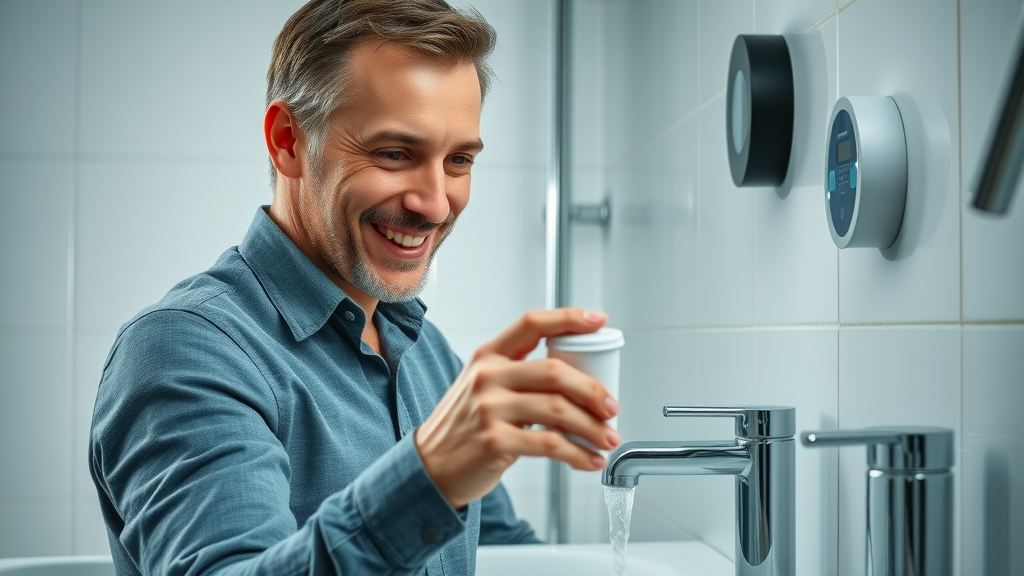
How Energy-Efficient Plumbing Solutions Drastically Reduce Home Water and Energy Consumption
When it comes to energy-efficient plumbing solutions , every drop saved and watt conserved counts. Upgrading to modern systems means using less water and energy for daily tasks like bathing, washing clothes, or doing dishes. For instance, installing high-efficiency shower heads can cut water flow rates in half without sacrificing pressure, drastically reducing water consumption and the energy needed to heat it. Likewise, using smarter water heaters like tankless models eliminates unnecessary energy waste by providing hot water only when required, preventing constant heat loss from stored water.
The impact is cumulative: small savings per minute, day, or use quickly grow into hundreds or thousands of gallons of water and kilowatt-hours of electricity saved annually. Not only does this save money in the long run, but it also reduces the environmental strain associated with excessive resource use, helping your household contribute to global sustainability without any compromise on comfort.
What You Need to Know: The Power and Benefits of Energy-Efficient Plumbing Systems
- What defines energy-efficient plumbing systems
- How modern plumbing solutions boost water and energy savings
- Practical steps to upgrade your plumbing system
- Comparison of hot water heating options
- Essential tips for maximizing energy efficiency
Energy-efficient plumbing systems are more than a home improvement trend—they’re a practical necessity. At its core, an energy-efficient plumbing system includes fixtures and appliances specifically engineered to save water and energy with every use. These systems feature innovative designs such as low-flow toilets, efficient shower heads , smart meters, and tankless water heaters . By lowering water flow and minimizing heat loss, homeowners can enjoy the same level of home comfort while using fewer resources. Upgrading is as simple as identifying old, inefficient fixtures and replacing them with new, high-efficiency models—delivering immediate cost reductions and lasting performance enhancements for your entire household.
Demystifying Energy-Efficient Plumbing Systems: A Comprehensive Guide to Modern Plumbing Solutions
The Essentials of an Energy-Efficient Plumbing System
An energy-efficient plumbing system starts with smart engineering at every water access point in the house. This means upgrading to plumbing fixtures that minimize water usage without reducing performance. Examples include high-efficiency faucets, advanced shower heads designed to mix air and water for good pressure at less flow, and toilets that employ dual-flush mechanisms to adjust water use per flush. Incorporating such changes can dramatically lower the overall water consumption and the energy required to treat and heat that water.
Additionally, efficient plumbing solutions often feature smart sensors, leak detection devices, and pressure regulators, all working together for improved performance with less waste. These core upgrades address not just comfort, but also long-term resilience—keeping your system leak-free and optimal for years to come.
Understanding Energy Efficiency in Plumbing: Key Principles
Energy efficiency in plumbing is achieved through innovative design, careful component choice, and the strategic use of technology. Central to these solutions are principles like minimizing hot water travel distance to reduce heat loss , lowering standby energy use in water heaters, and installing pressure-reducing valves that prevent excess flow. When combined, these elements drive significant savings and environmental benefits.
Understanding these principles allows homeowners to make smarter upgrade choices, from selecting Pex pipes with better insulation properties, to embracing water recycling systems that reuse greywater for landscaping or flushing toilets. Each improvement is a step towards lower utility bills and higher home value, all while championing sustainability.
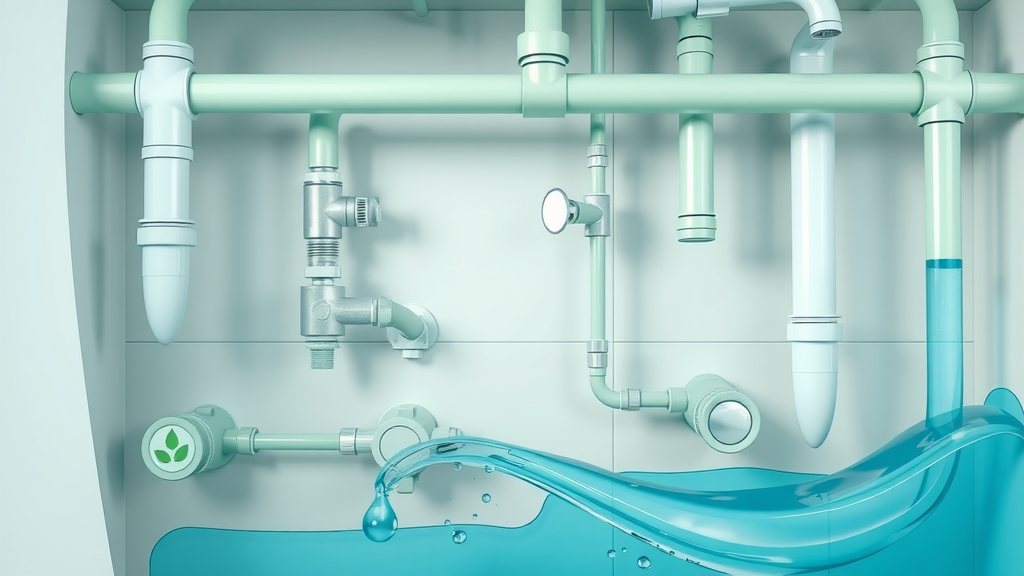
Core Features of Efficient Plumbing Solutions That Every Homeowner Should Know
High Efficiency Plumbing Fixtures for Water and Energy Savings
When upgrading to efficient plumbing solutions , consider fixtures that transform every water drop into savings. Modern plumbing fixtures like low-flow shower heads, dual flush toilets , and smart water meters reduce water consumption without compromising your experience. For instance, advanced shower heads infuse air into the water stream, creating an invigorating shower with less water. Similarly, pressure-reducing valves and recycling systems curb water wastage and maintain the right water pressure, ensuring your plumbing system works at its most energy efficient level.
By thoughtfully integrating these fixtures, homeowners benefit from lower utility bills , reduced environmental impact, and a more reliable plumbing infrastructure. The up-front effort in selecting the right features is quickly repaid with continuous savings and improved daily comfort.
- Low-flow shower heads and faucets
- Dual flush toilets
- Pressure reducing valves
- Smart water meters
- Water recycling systems
"Switching to energy-efficient plumbing systems can decrease household water consumption by up to 30%. — UK Water Industry Research"
How to Upgrade Your Plumbing System for Maximum Energy Efficiency
Key Steps to Transition Your Plumbing System
Upgrading to energy-efficient plumbing systems is best approached with a clear plan. Begin by assessing your current plumbing system and identifying fixtures or appliances that are outdated or inefficient. Replace these with Energy Star-rated or equally efficient models—starting with major water consumers like toilets, shower heads, faucets, and the water heater.
Incorporate smart technologies, such as water monitoring devices, pressure regulators, and leak detectors to optimize the performance of your new system. If you’re unsure about compatibility or installation, consult a professional plumber to avoid mismatches or missed savings opportunities. Whenever possible, prioritize upgrades in logical stages, starting with high-use areas and working your way through the home for the greatest impact.
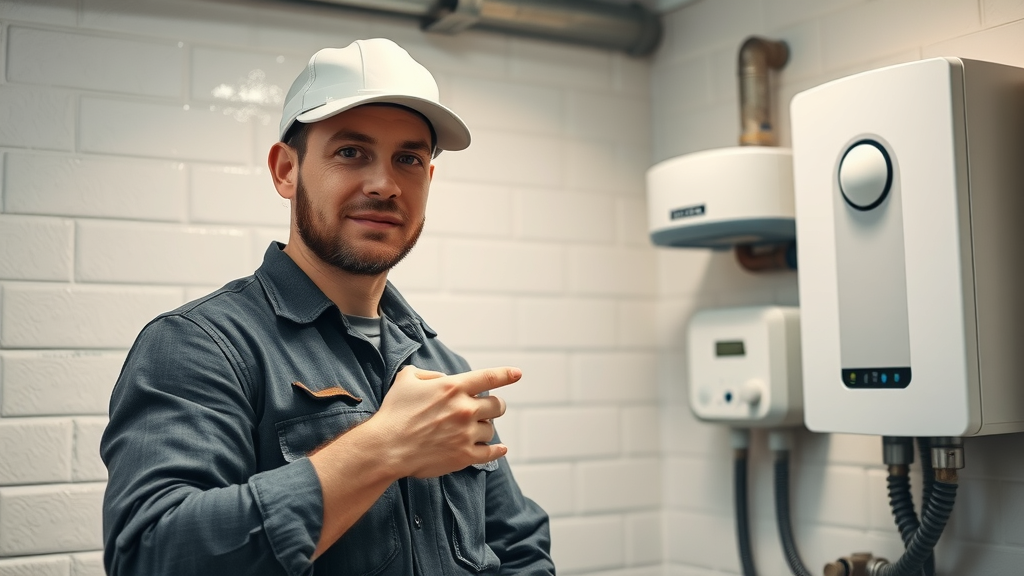
Choosing the Right Water Heater: Conventional vs. Tankless Water Heaters
Selecting the optimal water heater is essential for maximizing the energy efficiency of your plumbing system. While conventional water heaters store and heat large amounts of water continuously (leading to heat loss and elevated energy bills), tankless water heaters offer a smarter solution by heating water only when it’s needed. This on-demand approach reduces energy use, saves space, and can provide hot water for two decades or longer.
Below is a clear comparison of features and efficiency factors to consider before upgrading:
| Feature | Conventional Water Heater | Tankless Water Heater |
|---|---|---|
| Upfront Cost | Lower | Higher |
| Energy Savings | Moderate | High |
| Lifespan | 10-15 years | 20+ years |
| Water and Energy Efficiency | Moderate | Excellent |
| Best For | Larger volumes | On-demand usage |
Hot Water, Heating & Sustainable Plumbing Systems for Water and Energy Conservation
Harnessing Tankless Water Heaters for Maximum Efficiency
Tankless water heaters represent the gold standard in modern efficient plumbing. Unlike traditional systems that continually heat vast amounts of stored water (even when not needed), tankless units engage only when a hot tap is turned on—delivering endless hot water with less energy. This eliminates much of the heat loss associated with storage tanks, and users typically see notable reductions in energy use, especially if they once heated water for long periods each day.
Homeowners who switch to tankless water heaters often report up to 40% savings on water heating costs, alongside added convenience and longer device lifespans. The environmental benefits compound over time, making tankless systems a smart move for anyone seeking to lower both bills and carbon emissions.
Utilizing Water Recycling and Rainwater Harvesting for Sustainable Plumbing
Water recycling and rainwater harvesting systems are growing in popularity among eco-minded homeowners. Greywater from sinks, showers, or washing machines can be filtered and reused for irrigation or flushing toilets, reducing total water consumption and lowering the strain on municipal water supplies. Likewise, harvesting and storing rainwater for outdoor use means less demand on potable water and further cost savings on bills.
These sustainable plumbing solutions not only conserve water but also insulate your home from supply disruptions or drought restrictions, providing long-term resilience and peace of mind. Consider adding a water recycling component or rainwater harvesting system for maximum environmental and financial impact.
Smart Components of Modern Energy-Efficient Plumbing Systems
Integrating PEX Pipes, Pressure Reducing Valves, and Efficient Shower Heads
Modern energy-efficient plumbing systems use advanced components for heightened performance and savings. PEX pipes are a popular choice due to their flexibility, superior heat retention, and minimal risk of leaks, helping to minimize both water loss and heat loss. Meanwhile, pressure reducing valves keep water pressure within an optimal range, preventing excess flow and reducing strain on appliances.
Pair these with high-efficiency shower heads designed to maintain satisfying water flow while using fewer gallons per minute, and your home’s plumbing system will be fully optimized for both energy and water conservation.
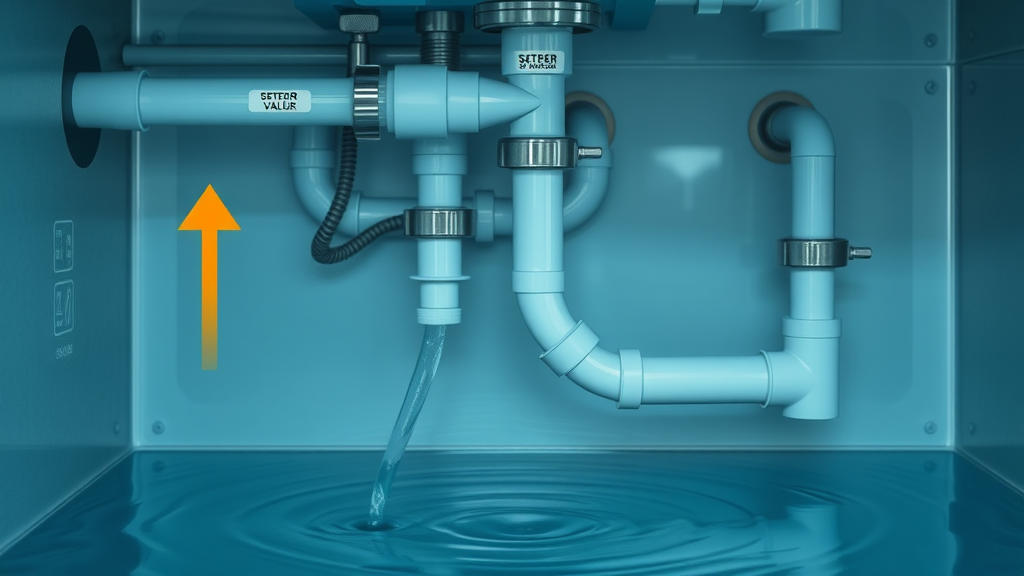
Understanding Water Pressure for Improved Energy Efficiency
Effective management of water pressure is crucial for sustaining energy efficiency across your plumbing system. When water pressure is too high, it leads to unnecessary water and energy waste—alongside increased wear on pipes and fixtures. By installing pressure-reducing valves and regularly checking pressure levels, homeowners prevent leaks, appliance damage, and overconsumption.
Keeping water pressure within a recommended range (typically 40–60 psi for homes) ensures every shower head or faucet delivers adequate flow, but not at the expense of excessive water and energy use. These small adjustments accumulate into substantial annual savings and system longevity.
Comparing Popular Efficient Plumbing Solutions and Water Heating Systems
- Pros and cons of various water heaters
- Energy factors for system selection
- Maintenance and lifespan comparisons
Effective comparisons are essential for choosing the right efficient plumbing solutions for your home. Conventional water heaters may offer lower up-front costs but are less efficient in the long run due to constant heat loss and frequent replacement cycles. In contrast, tankless water heaters excel in energy efficiency, long-term reliability, and require less maintenance.
Energy factors, ease of installation, available space, and system compatibility should all be weighed during selection. Taking a holistic approach—factoring in not just cost, but also efficiency, sustainability, and the needs of your household—ensures you choose a solution with the best impact on both your wallet and the planet.
A Step-by-Step Guide to Upgrading Your Home to Energy-Efficient Plumbing Systems
- Assess current plumbing systems
- Identify inefficient fixtures
- Research Energy Star and similar certifications
- Seek professional plumbing advice
- Implement upgrades in logical stages
Transforming your home into a model of energy efficiency is simpler than it seems when you break the process into manageable steps. Begin by taking stock of all fixtures, pipes, and appliances; note aged or underperforming components for replacement. Identify upgrade priorities—start with the highest water and energy users, then move to less critical items.
Whenever possible, look for the Energy Star label or similar certifications that guarantee performance and efficiency. Consult with a plumber—like the experts at Ed Serrell Plumbing and Heating—for insight and professional installation, and implement your upgrades in stages for minimal disruption and predictable financial outlay.
"Making the switch to energy-efficient plumbing isn’t just eco-friendly—it’s also wallet-friendly. — Ed Serrell Plumbing and Heating"
Cost Savings and Extra Benefits of Energy-Efficient Plumbing Systems
How Efficient Plumbing Reduces Utility Expenses and Increases Home Value
Efficient plumbing solutions don’t just cut utility bills—they enhance your home’s value and appeal. With every upgrade, you shrink your environmental footprint and boost your property value . Lower water and energy bills lead to direct annual savings; simultaneously, reduced maintenance demands mean fewer costly repairs over time.
The table below summarizes estimated savings and added value for homes equipped with energy-efficient plumbing systems :
| Benefit | Estimated Savings per Year |
|---|---|
| Reduced Water Use | 15-30% |
| Lower Energy Bills | 10-25% |
| Increased Property Value | Up to 5% |
| Decreased Maintenance Costs | Varies |

Top Tips for Maintaining Your Energy-Efficient Plumbing System
- Inspect pipes and fixtures regularly
- Schedule professional check-ups annually
- Monitor water pressure for leaks
- Keep water heaters at optimal temperatures
- Replace worn components promptly
Even the best energy-efficient plumbing system needs routine care to maintain peak performance. Schedule regular inspections to check for leaks or inefficiencies in pipes, fixtures, and appliances. Stay proactive in maintaining water pressure, and ensure your water heater is set to the manufacturer’s recommended temperature for safety and efficiency.
Replace seals, valves, or gaskets as soon as wear is detected, and consider an annual visit from a professional to catch issues before they become emergencies. These simple practices maximize savings and minimize headaches—preserving both your comfort and your investment.
Common Pitfalls to Avoid When Upgrading to Efficient Plumbing Solutions
- Overlooking professional installation
- Mismatching system components
- Ignoring water and energy monitoring
- Failing to plan for future needs
The path to efficient plumbing solutions is smooth when you sidestep common mistakes. Always use professional installers who know the requirements and can ensure compatibility between fixtures and appliances. Mismatching components can reduce the anticipated savings and even cause breakdowns.
Measuring and monitoring water and energy use help identify leaks or inefficiencies early. Finally, think ahead—plan upgrades that accommodate potential future changes in household size or water consumption needs, so your investment remains future-proof.
People Also Ask: Addressing Popular Queries About Energy-Efficient Plumbing Systems
What are high efficiency plumbing fixtures?
High efficiency plumbing fixtures are devices such as low-flow toilets, shower heads, and faucets that are engineered to reduce water and energy consumption without sacrificing performance.
What is the most energy-efficient water heating system?
The most energy-efficient water heating system is typically a tankless water heater, which heats water on demand, or solar water heating systems, both of which significantly decrease water and energy usage.
What are the water efficient plumbing systems?
Water efficient plumbing systems utilize fixtures and appliances such as dual flush toilets, low-flow shower heads, pressure-reducing valves, and greywater recycling systems to minimize water and energy use.
What are the three types of plumbing systems?
The three main types of plumbing systems in buildings are potable water systems (fresh water distribution), sanitary drainage (waste removal), and stormwater drainage (rainwater management).
Key FAQs About Energy-Efficient Plumbing Systems and Efficient Plumbing Solutions
- How do energy-efficient plumbing systems impact utility bills?
- Can older homes benefit from efficient plumbing upgrades?
- What is the ROI for upgrading to energy-efficient plumbing solutions?
- Are government incentives available?
Energy-efficient plumbing systems consistently lower utility bills by reducing both water and energy consumption. Even older homes can reap these benefits, often achieving faster paybacks due to higher baseline inefficiencies. The return on investment (ROI) is typically favorable, with most homeowners seeing regained costs within a few years—especially when factoring in available rebates or incentives from governments keen on boosting resource conservation. Always check for local programs supporting your upgrades.
Latest Innovations in Water and Energy-Saving Plumbing Technology
Smart Home Integration with Modern Plumbing Systems
The next generation of efficient plumbing solutions seamlessly integrates with smart home platforms. Homeowners can monitor water flow, usage patterns, and detect leaks in real time via digital dashboards or apps, maximizing efficiency and preventing costly surprises. Automated alerts ensure you’re instantly informed of problems, empowering proactive maintenance and resource management.
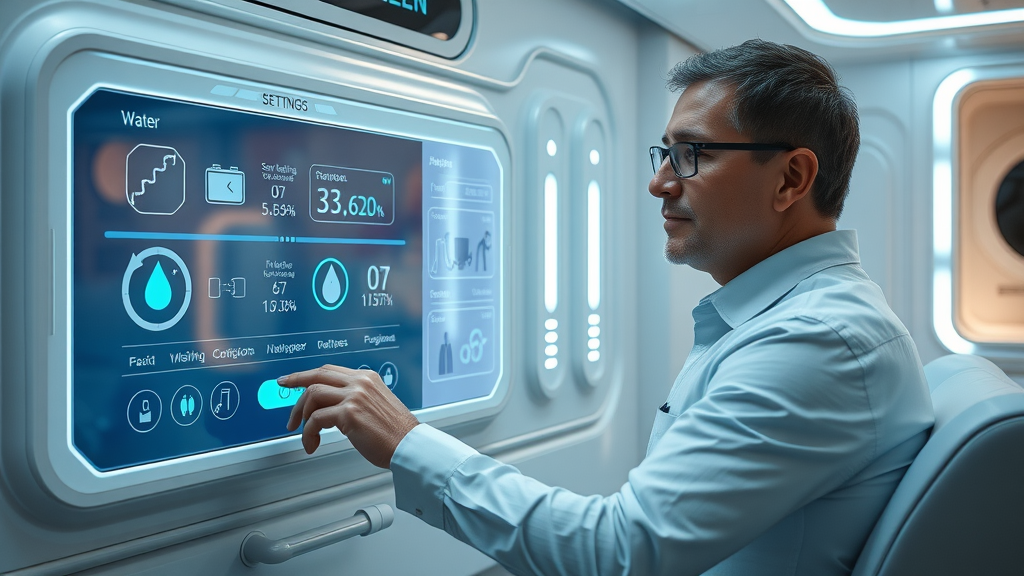
New Materials and Designs for Advanced Energy Efficiency
Materials science is transforming energy efficient plumbing. PEX piping is increasingly prominent for its minimal thermal loss, flexibility, and resistance to scaling or corrosion compared to metal. Coupled with innovative fixture designs—such as aerated taps and digitally controlled valves—these materials ensure consistent comfort while further reducing energy and water waste.
New designs also mean that even small retrofits, like adding efficient faucet aerators, can yield measurable improvements in utility costs, making it easier than ever for every homeowner to embrace sustainability.
Case Study: Transforming a Home with Energy-Efficient Plumbing Systems
Results: Measurable Water and Energy Savings
Consider a recent real-life example: a typical family home retrofitted with energy-efficient plumbing systems , including low-flow fixtures, a tankless water heater, and full leak monitoring. Over the first year, their water bill dropped by 28%, and annual energy costs fell by nearly 20%. Not only did they save money month after month, but their home’s market value also increased, with buyers seeking out eco-friendly upgrades. This transformation shows that efficient plumbing solutions aren’t just a trend—they’re a strategy for comfort, sustainability, and a stronger financial future.
The family also reported added peace of mind knowing their system was designed for both everyday reliability and long-term impact—proof that modern upgrades can deliver on efficiency, convenience, and savings all at once.
Popular Myths About Energy-Efficient Plumbing: Setting the Record Straight
- "Energy-efficient plumbing systems don’t work as well"
- "They are too expensive to install"
- "Maintenance is complex"
Despite their proven benefits, some myths persist about energy-efficient plumbing systems . The reality is that high-quality, certified fixtures consistently meet or surpass the performance of traditional models. Modern upgrades are more affordable than ever, and installation costs are often offset by rapid savings. Finally, maintaining an efficient system is no more complex than traditional plumbing—especially with today’s smart monitoring tools.
"One-time upgrades to modern plumbing systems can deliver ongoing savings for decades."
Watch: How an Energy-Efficient Plumbing System Makes a Difference (Video)
See real-world results and homeowner testimonials about the long-term value of upgrading to efficient plumbing solutions.
Walkthrough: Installing Efficient Plumbing Fixtures and Water Heaters (Video)
Follow expert plumbers step-by-step as they install new water-saving fixtures and advanced tankless water heaters for optimal efficiency.
See Innovation in Action: Water Recycling and Rainwater Harvesting Systems (Video)
Explore how today’s innovative systems reuse rainwater and greywater to cut both water bills and environmental impact.
For Expert Help With Upgrading to Energy-Efficient Plumbing Systems
For expert help or advice from Ed Serrell Plumbing and Heating call 0796 688 4368 , or email info@edsplumbing.co.uk
Summary: Maximizing the Value of Energy-Efficient Plumbing Systems for Every Home
- Energy-efficient plumbing systems cut utility bills and environmental impact
- Upgrades deliver long-term value
- Professional guidance ensures optimal results
Ready to start saving money and conserving resources? Connect with certified professionals to make your plumbing system energy-efficient, reliable, and future-ready today.
Sources
- UK Water Industry Research – https://www.ukwir.org
- Energy Saving Trust – https://www.energysavingtrust.org.uk
- ENERGY STAR – https://www.energystar.gov
- World Health Organization – https://www.who.int/water_sanitation_health
- Ed Serrell Plumbing and Heating – https://www.edserrellplumbing.co.uk
Upgrading to energy-efficient plumbing systems can lead to significant savings on your utility bills and contribute to environmental sustainability. For instance, installing low-flow fixtures—such as faucets, showerheads, and toilets—can reduce water usage by up to 50% without compromising performance. ( benfranklinplumbingprescott.com ) Additionally, replacing traditional water heaters with tankless models provides hot water on demand, eliminating standby energy loss and potentially cutting energy consumption by up to 30%. ( benfranklinplumbingprescott.com ) Implementing these upgrades not only conserves resources but also enhances the efficiency and value of your home.
 Add Row
Add Row  Add
Add 








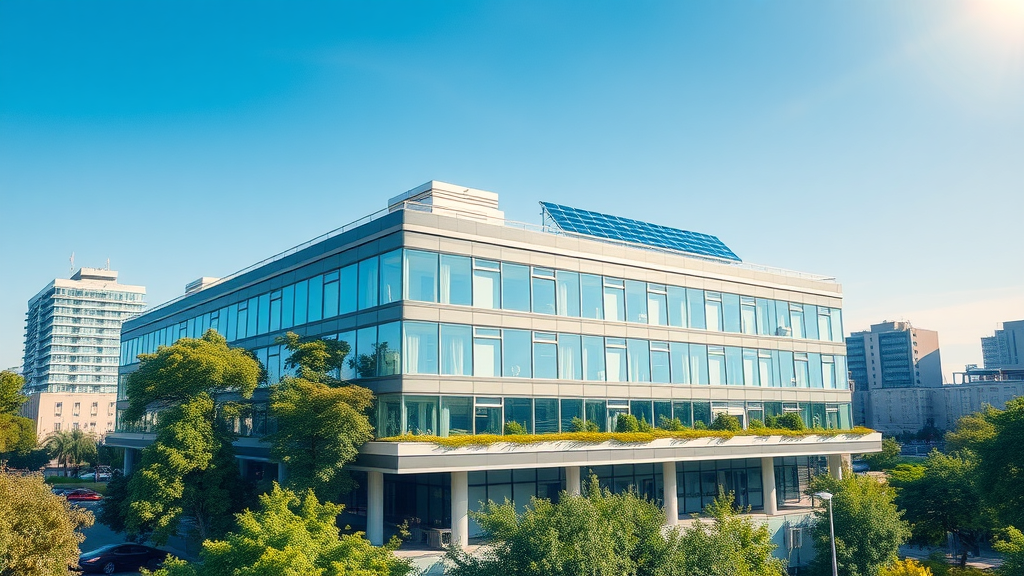
Write A Comment